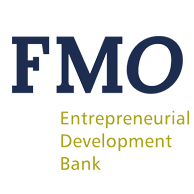APOLLO INVESTMENT PARTNERSHIP II
Status: Approved investmentWhy disclosure?
FMO is committed to making publicly available relevant investment information that informs stakeholders and enables them to engage directly with FMO on its investments which, in turn, enhances our investment decisions, the design and implementation of projects and policies, and strengthens development outcomes. Learn more
In case of questions
In case of questions, please contact us at disclosure@fmo.nl
Disclaimer
The information as disclosed is indicative and provided on an "as-is/as available" basis for general informational purposes only and should not be construed as financial, legal or investment advice, nor as a commitment or an offer to arrange or provide any financing. The final decision to provide financing is subject to the terms and conditions of FMO in its sole and absolute discretion. When providing links to other sites, FMO bears no responsibility for the accuracy, legality or content of the external site or for that of subsequent links. The information on proposed investment for high-risk investments is made available in the language relevant to the country or region where the bulk of operations take place. Translations of any information into languages other than English are intended as a convenience for local stakeholders. In case of any discrepancy, the information provided in English will prevail.
Who is our customer?
The Cookhouse Wind Farm, developed under the First Round of the South African Renewable Energy Procurement Programme, is located between Cookhouse and Bedford in the Eastern Cape. The wind farm was developed by African Clean Energy Developments (ACED) and is owned by a consortium of infrastructure investors including Apollo and African Infrastructure Investment Fund 2 (AIIF2). FMO is investing in Cookhouse Wind Farm through both these funds, which are managed by African Infrastructure Investment Managers (a joint venture between Old Mutual Investment Group SA (OMIGSA) and Macquarie Group of Australia). Other investors are the Infrastructure, Developmental and Environmental Assets Managed Fund (IDEAS), managed by OMIGSA; AFPOC and the local communities of Cookhouse, Bedford, Somerset East and Adelaide through their ownership in the Cookhouse Wind Farm Community Trust. The project is financed by Standard Bank of South Africa, Nedbank and Futuregrowth Asset Management. The main contractor is Suzlon Wind Energy South Africa, a subsidiary of the Suzlon Group, the 5th largest turbine supplier in the world.
What is our funding objective?
FMO's investment will go towards the construction of the wind farm. Construction commenced in early February in 2014, and the wind farm, when built, will be one of the largest in Africa, consisting of 66 Suzlon 2.1MW turbines with an installed capacity of 138.6MW, enough to power about 145,000 low-income homes. Power is expected to be supplied to the Eskom grid by the second quarter of 2014.
Why do we fund this investment?
Financing of the project is fully in line with FMO's strategy of funding Renewable Energy projects in emerging markets. The Cookhouse project was developed in close partnership with, and has had significant support from, the local municipalities and communities. These organizations have played a key role in assisting the development of the project and ensuring that it is delivered in a manner that works for the benefit of the surrounding community. A Community Liaison Office has been established in Cookhouse to serve as an interface between the project and the local communities. The local communities of Cookhouse, Bedford, Somerset East and Adelaide will all benefit from the project, while social and economic development will be driven by over 300 local jobs, significant local sourcing and community ownership.
- Website customer/investment
- https://aiimafrica.com
- Region
- Africa
- Country
- South Africa
- Sector
- Energy
- Effective date
- 3/3/2012
- Total FMO financing
- ZAR 220.00 MLN
- Funding
- FMO NV
-
Risk categorization on environmental and social impacts, A = high risk, B+ = medium high risk, B = medium risk, C = low risk
Environmental & Social Category
(A, B+, B or C) - B+

